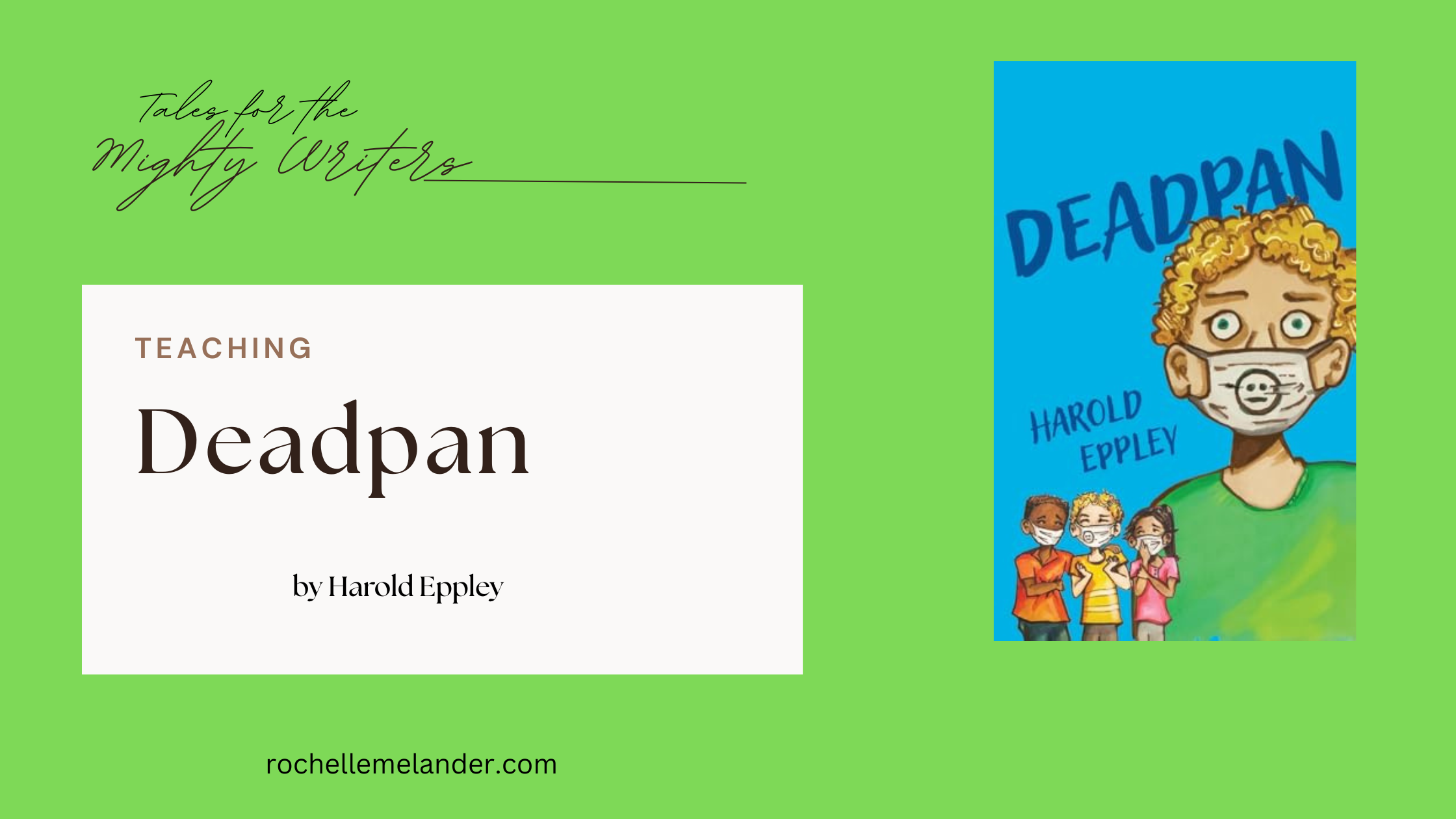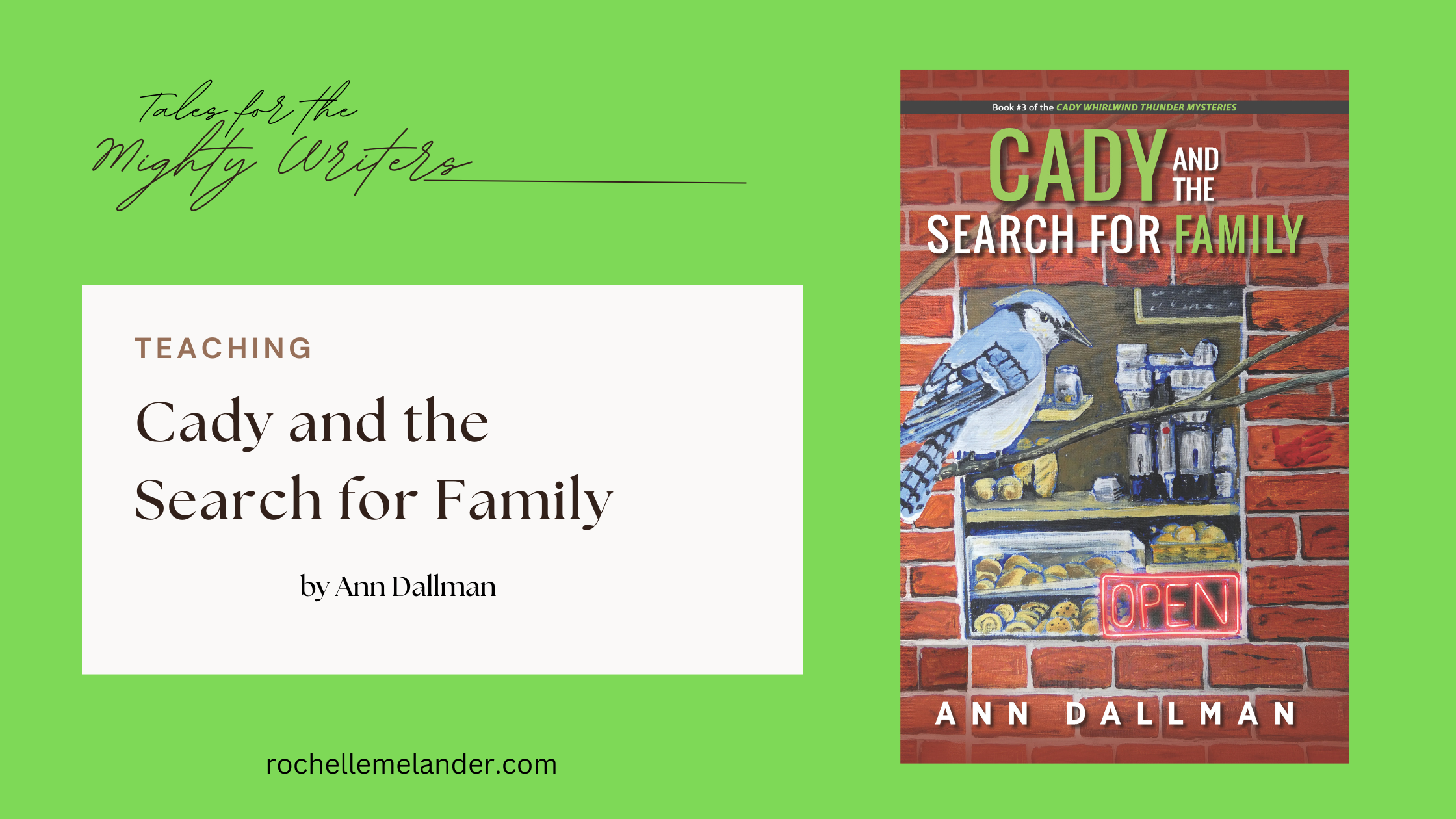A Note to the Reader
A few years ago, I took a class with Janet Wong and Sylvia Vardell, founders of Pomelo Books. It reignited my love for poetry. I spent hours listing words, moving them around, putting together poems. My daily walks got more interesting–I noticed details about flowers and trees I used to pass right by and wondered how I might write about them.
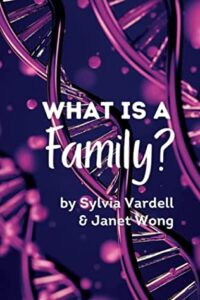 Under their imprint Pomelo Books, Janet and Sylvia have published many anthologies. I’ve been blessed to be a part of three of them, including the most recent release, What is a Family. All proceeds of this book will be donated to the IBBY Children in Crisis Fund.
Under their imprint Pomelo Books, Janet and Sylvia have published many anthologies. I’ve been blessed to be a part of three of them, including the most recent release, What is a Family. All proceeds of this book will be donated to the IBBY Children in Crisis Fund.
Today’s post is a gigantic celebration of playing with poetry! It’s written by authors who contributed poems to What is a Family. If you’re a teacher or librarian, you’ll want to bookmark this post and come back to it to inspire your work with young people. If you’re also a poet, think about using these ideas as a springboard for your own writing.
And don’t forget to scroll down to the end of the post to read about the inspiring writers who contributed these lessons. They’ve got a lot to share–and you can find them on social media.
Happy writing and teaching!
Rochelle
Teaching Children to Play with Poetry
Sharing a Bank of Building Blocks
By Sandy Brehl
One “way of life” that writers, especially poets, find valuable is to make it a habit of being intentional in noticing and preserving perceptions of the world around them. One way to do this is with a “FIVE SENSES” effort throughout each day. Those who have a journal-writing habit may record notes there, returning to them when writing for inspiration. But many struggle to sustain that habit. It can be helpful in a classroom to provide a public space for sharing “captured” experiences. A single bulletin board space may be divided and labeled for each: Things I see, Things I hear, Things I touch/feel, Things I taste, Things I smell.
Everyone may contribute by noticing a perception or observation and recording the language it inspires (a word, a phrase, a full line?) on a sticky note. Encourage signing and dating the post. Making a habit of conscious awareness of input to our senses on a daily basis is valuable in itself. Creating a “wall” of shared expressions celebrates that effort and provides the entire group a ready access for use while writing, or simply as examples to enjoy and admire. Many will include similes, metaphors, rich descriptive words, and other writing craft examples. Invite contributors to share a favorite from the board, of their own or others’ contributions, during workshops or those precious scraps of time such as lining up or instructional transitions.
Examples:
- a rock band of robins
- new pj’s itching like a rash
- a swirl of butter and honey danced on my tongue
Take it outside!
By Theresa Gaughan
Bring students outside with their writing journals and a pencil. Encourage students to observe their surroundings. Ask them to write down words that describe what they observe. Review parts of speech by encouraging them to write nouns, verbs, and adjectives. Connect to science by asking them to include what they see, hear, smell, and feel. Once they have a good list, students can begin writing. Their words might inspire them to write a list poem, a Haiku, a Cinquain, or a free verse poem. Don’t forget to have them share their finished poems!
Step into Someone Else’s Shoes: Persona Poetry
By Joyce Uglow
Provide photographs of and/or different types of shoes for this activity. It’s also perfect for your writing center. In a mini lesson, define persona as another word for mask. Then read and discuss a collection of Persona poems and picture books for kids. Make a Notice and Note chart drawing their attention to the craft elements in Persona poetry such as: first person point of view, voice, time, place, mood, and emotions. After choosing a shoe, the students imagine themselves as the shoe. Using the shoe’s memories as the driving force, students write one or more poems.
Pro Tips: Write while your students write. Invite students to share their poetry from the class Author’s Chair. This could be a fun chapbook for the class.
Personification
By Cynthia Cotten
Play with poetry by inviting students to write a poem using personification. Define personification. Read a couple of poems that use personification (e.g., “The Fog”, by Carl Sandburg, “Two Sunflowers Move in The Yellow Room”, by Nancy Willard, or even the old nursery rhyme, “Hey Diddle Diddle”). Have students write a sentence using personification, then expand that sentence into a poem.
Teaching Riddles
By Helen Kemp Zax
One great way to include poetry in a lesson for almost any subject is teaching students how to write riddle poems. Their riddle poems can then be used for fun guessing games about science facts, math principles, famous historical figures—riddles about any person, place, or thing.
Define riddle poems: A riddle poem describes a person, place, or thing without naming it. The reader or listener must try to guess the riddle’s subject. Riddle poems can be any length. They don’t have to rhyme, but it’s fun if they do.
Read two riddle poems:
Here are two from J.R.R. Tolkien’s The Hobbit.
What has roots as nobody sees,
Is taller than trees,
Up, up it goes
And yet never grows?
A mountain.
Thirty white horses on a red hill,
First they champ,
Then they stamp,
Then they stand still.
Teeth in a mouth.
Some riddle-writing tips:
Don’t use your answer in the riddle.
Try to keep the riddle short, so it isn’t hard to remember.
You might end with a line like, “Who am I?” or “What am I?”
Ask students to write a riddle about whatever subject you are teaching. Have them try to stump a partner or other students in their group with their riddles.
Write a List Poem
By Leslie Degnan
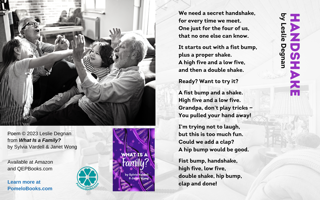
- Read: Handshake by Leslie Degnan
- Poetry can be lots of fun. Think about and create your own secret handshake with a friend.
- What will you do first, second, third, or fourth? Write a poem about it.
- This is called a ‘list poem.’ List poems may or may not rhyme. They list specific details about an experience so the reader can understand exactly what you, the poet, are doing.
- Read your poem aloud and ask your classmates to do exactly what the poem tells them to do. Have fun creating.
Acrostic Advice
By Anastasia Suen
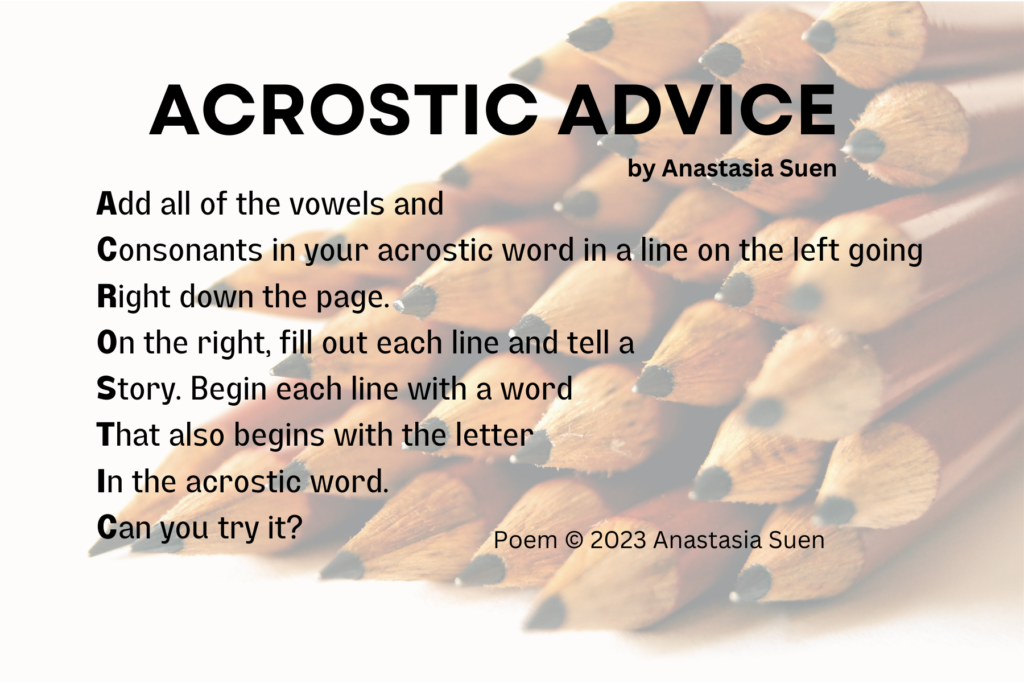
A Mentor Poem Exercise That Changes Everything
By April Halpin Wayland
Imitation is a playful way for students (and for you!) to find their poet within.
- Choose your favorite poem for the age you’re teaching.
- Read it aloud before your students see it.
- Show them the words and read it again.
- Read them a poem you wrote, inspired by it.
- Now it’s their turn to choose a topic and imitate the mentor poem!
- See https://www.teachingauthors.com/2022/10/2-mentor-poems-to-try-and-then-teach.htmlfor more details.
Tongue Twisters
By Rochelle Melander
Play with poetry by inviting students to write their own tongue twister poem.
- Define the word: alliteration.
- Read two tongue twister poems. Here’s one of my favorites:
How much wood would a woodchuck chuck if a woodchuck could chuck wood?
He would chuck, he would, as much as he could, and chuck as much wood
As a woodchuck would if a woodchuck could chuck wood
- Ask students to craft a single sentence using words that start with the same sound.
Pro Tip: This exercise is fun to do in groups!
About the authors
Sandy Brehl writes poetry and prose for readers of all ages, including her picture book Is It Over? and middle grade WWII Odin’s Promise trilogy. You can find her on Twitter @sandybrehl and @pbworkshop, at her author website www.sandybrehlbooks.com, and frequently sharing reviews and interviews about picture books at her blog http://unpackingpicturebookpower.blogspot.com.
Theresa Gaughan is a third-grade teacher and a poet. She enjoys using poetry to teach a variety of concepts. You can find more teaching ideas by visiting her blog, https://theresasteachingtidbits.blogspot.com . You can also find her on Instagram @theresasteachingtidbits and on Twitter @theresagaughan.
Joyce Uglow writes poems and poetic stories on topics from bees, trees, and families to ancient cave art and fossils trapped in asphalt seeps. She’s a forever cheerleader for Team Education. You can find her volunteering for SCBWI Wisconsin, at http://inkingcompellingstories.com, and on Twitter @jpuglow.
Cynthia Cotten is a poet and author of 9 books, including Snow Ponies and This Is The Stable. She loves playing with language and seeing how poetry can give both a writer and a reader a new way of looking at something.
Helen Kemp Zax loves to write poetry, especially rhyming poems. She is co-winner of the 2021 YorkMix International Children’s Poetry Prize, 2018 MG Katherine Paterson Prize winner, and 2019 Finalist. Her poetry appears in anthologies including Imperfect II, chasing clouds, and What is a Friend? and in magazines including Cricket, Hello, High Five, Launchpad, Touchdown, Hunger Mountain, The Caterpillar, and The Dirigible Balloon. Helen lives in Washington, DC with her husband and Aussiedoodle Huckleberry Finn. Find her poetry at www.helenzax.com.
Leslie Degnan enjoyed years in the early childhood classroom reading picture books and poems to young children. Now she writes her own poems for kids. Leslie had lots of fun creating a secret handshake with her granddaughter and writing a poem about it. You can find Leslie on Twitter @DegnanLeslie
Anastasia Suen has taught kindergarten to college, writes for Booklist, and works as a developmental editor. The author (and ghostwriter) of 400+ books for children, teens, and adults, she blogs about new books at #kidlit Book of the Day. https://asuen.com/kidlit-book-day/
April Halprin Wayland is the author of award-winning picture books, poems, and a young adult novel. She writes a poem a day and sends it to her friend, author Bruce Balan, who sends a poem he wrote back to her as he sails around the world. Find her on TeachingAuthors.com, on Instagram @aprilwayland, and at AprilWayland.com. Her tagline? 1/2 author, 1/2 poet, 1/2 not good at fractions.
Rochelle Melander wrote her first book at seven and has published 12 books. Her debut book for children Mightier Than the Sword: Rebels, Reformers, and Revolutionaries Who Changed the World through Writing won the 2021 Cybils Award for Middle Grade nonfiction and the Council for Wisconsin Writers Tofte/Wright Children’s Literary Award. She’s an ADHD coach, an artist educator, and the founder of Dream Keepers, a writing workshop for young people. Find her on all social media platforms as @writenowcoach


